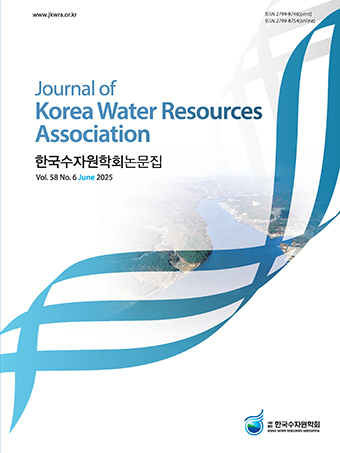Research Article
Abstract
References
Information
Bandai, T., and Ghezzehei, T.A. (2022). "Forward and inverse modeling of water flow in unsaturated soils with discontinuous hydraulic conductivities using physics-informed neural networks with domain decomposition." Hydrology and Earth System Sciences, Vol. 26, No. 16, pp. 4469-4495.
10.5194/hess-26-4469-2022
Kuffour, B.N., Engdahl, N.B., Woodward, C.S., Condon, L.E., Kollet, S., and Maxwell, R.M. (2020). "Simulating coupled surface-subsurface flows with ParFlow v3. 5.0: capabilities, applications, and ongoing development of an open-source, massively parallel, integrated hydrologic model." Geoscientific Model Development, Vol. 13, No. 3, pp. 1373-1397.
10.5194/gmd-13-1373-2020
Marras, S., Kopera, M.A., Constantinescu, E.M., Suckale, J., and Giraldo, F.X. (2018). "A residual-based shock capturing scheme for the continuous/discontinuous spectral element solution of the 2D shallow water equations." Advances in Water Resources, Vol. 114, pp. 45-63.
10.1016/j.advwatres.2018.02.003
Peng, G.C., Alber, M., Buganza Tepole, A., Cannon, W.R., De, S., Dura-Bernal, S., Garikipati, K., Karniadakis, G., Lytton, W.W., and Perdikaris, P. (2021). "Multiscale modeling meets machine learning: What can we learn?." Archives of Computational Methods in Engineering, Vol. 28, pp. 1017-1037.
10.1007/s11831-020-09405-534093005PMC8172124
Soares-Frazao, S., Canelas, R., Cao, Z., Cea, L., Chaudhry, H.M., Die Moran, A., El Kadi, K., Ferreira, R., Cadórniga, I.F., and Gonzalez-Ramirez, N. (2012). "Dam-break flows over mobile beds: experiments and benchmark tests for numerical models." Journal of Hydraulic Research, Vol. 50, No. 4, pp. 364-375.
10.1080/00221686.2012.689682
Tartakovsky, A.M., Marrero, C.O., Perdikaris, P., Tartakovsky, G.D., and Barajas-Solano, D. (2020). "Physics-informed deep neural networks for learning parameters and constitutive relationships in subsurface flow problems." Water Resources Research, Vol. 56, No. 5, e2019WR026731.
10.1029/2019WR026731
Vijayaraghavan, S., Wu, L., Noels, L., Bordas, S., Natarajan, S., and Beex, L.A. (2023). "A data-driven reduced-order surrogate model for entire elastoplastic simulations applied to representative volume elements." Scientific Reports, Vol. 13, No. 1, 12781.
10.1038/s41598-023-38104-x37550337PMC10406896
- Publisher :KOREA WATER RESOURECES ASSOCIATION
- Publisher(Ko) :한국수자원학회
- Journal Title :Journal of Korea Water Resources Association
- Journal Title(Ko) :한국수자원학회 논문집
- Volume : 56
- No :12
- Pages :939-953
- Received Date : 2023-07-24
- Revised Date : 2023-11-28
- Accepted Date : 2023-11-30
- DOI :https://doi.org/10.3741/JKWRA.2023.56.12.939




 Journal of Korea Water Resources Association
Journal of Korea Water Resources Association










